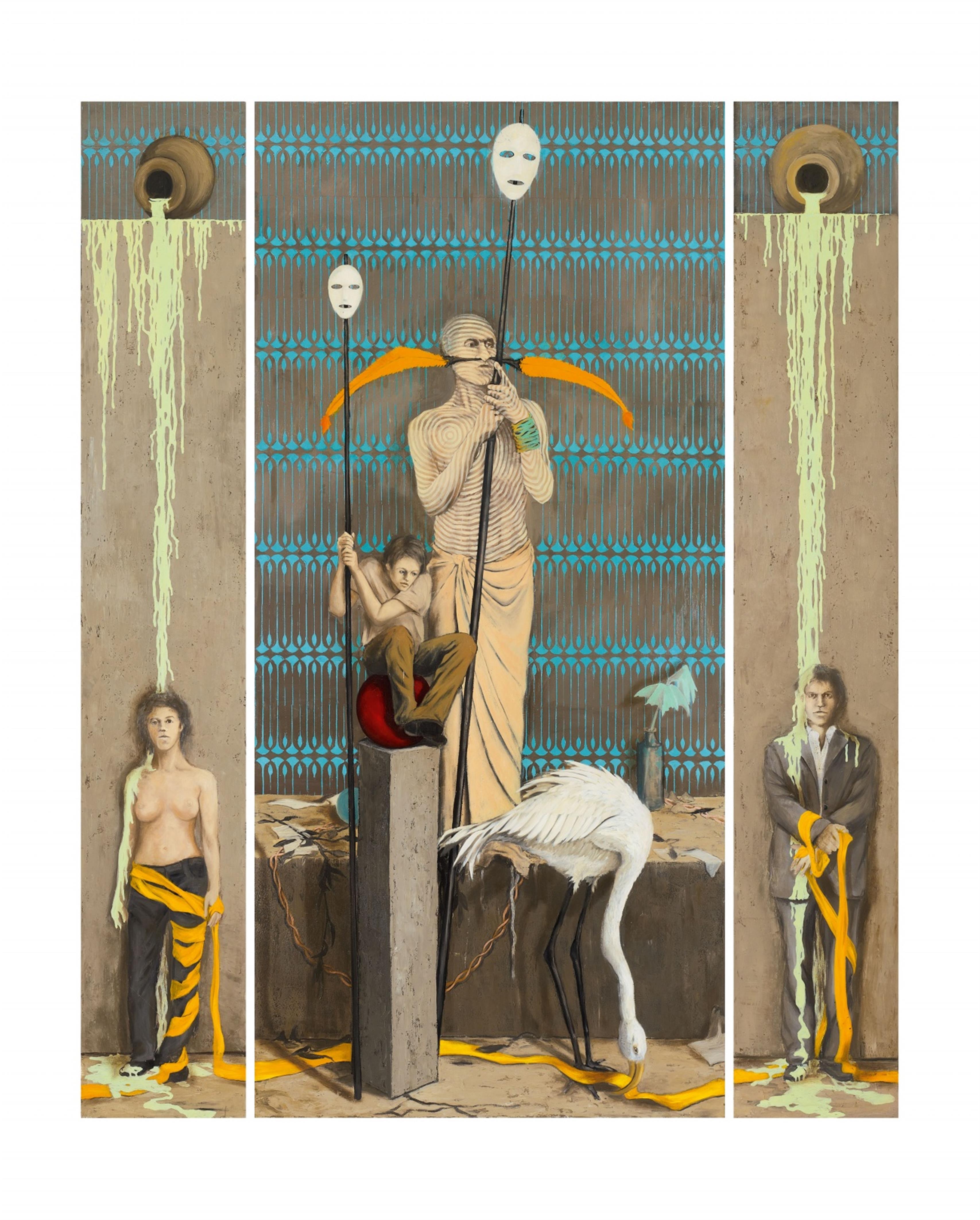Jonas Burgert
Zyklus-Potsdam (Teil II)
2006
Triptychon: oil on canvas. 275 x 45 cm, 275 x 130 cm, 275 x 45 cm (overall dimensions approx. 275 x 220 cm). Each signed, dated and titled 'Zyklus-Potsdam 2006 Jonas Burgert' verso on canvas and additionally signed 'JONAS BURGERT' and inscribed '6', '7' and '8' resp. - Occasional minor crackling.
Mythology, art history and contemporary history meet in Jonas Burgert's archaic visions and form a grotesque, surreal pictorial universe. The main themes are the psychological human condition and human interrelations.
In the second part of the Potsdam series, the artist works with the form of the triptych. Two narrow picture panels, depicting a woman and a man, frame the central canvas. An orange band in which the outer figures are entwined connects these elements. The two main figures in the centre appear elevated, one positioned on a ledge and the other on a plinth. In their hands, they are holding their white masks attached to long sticks while a stork at their feet reaches for the orange band with its beak.
The scale of size is overruled in the puppet theatre of the artist from Berlin. Each figure appears to be isolated, as it does not make a connection to the other beings due to its posture and line of sight. In fact, the figures are artificially joined together through individual pictorial elements as well as an accentuated colour composition. “Even though his bodies are sometimes entwined or bound together by bands, just as often they arise from differing spatial dimensions. This has nothing to do with the art historical game of anamorphosis in as much as we cannot compensate the discrepancy of Burgert's spaces by changing our observer's standpoint, thus re-establishing the impression of a homogenous space. Burgert's spaces, mostly constructed spaces by the way, are by all means subject to the familiar regularities of central perspective, in other words an orthogonal spatial construction orientated to one uniform, central vanishing point. Their disruption is of a different nature that does not lie in the spaces but in the population of the space. It is the living beings that often lack a homogenous scale and therefore do not seem to arise from any mutual space. (Dorothée Brill, Sie trugen den Namen Mensch, in: Jonas Burgert, Schutt und Futter, exhib.cat. Kestnergesellschaft Hannover, Cologne 2013, p. 10).
Catalogue Raisonné
Schreiber/Wipplinger 41

